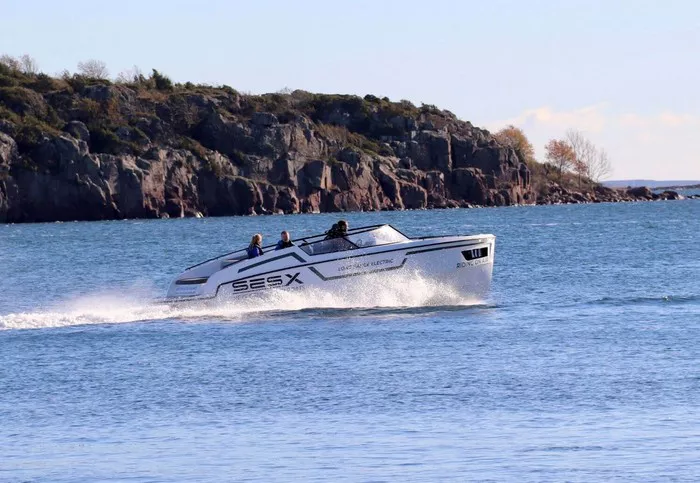Norwegian startup Pascal Technologies has announced that its proprietary AirHull technology will be integrated into two new electric vessels: the NABCREW Zero AirBlue 1240 and the Hugin DC. The move showcases the versatility of the energy-saving system and marks a significant step forward in sustainable maritime innovation.
AirHull: Lifting Vessels with Air to Cut Energy Use
AirHull is a unique innovation aimed at reducing the energy consumption of boats by up to 50%. The system works by lifting the hull partially out of the water using a cushion of pressurized air. A ridge around the boat’s lower edge forms a cavity beneath the hull. A bow-mounted fan pumps air into this cavity, which is then sealed at the stern by a closing flap. This creates an air pocket that lifts the vessel 15 to 20 centimeters (6–8 inches) above the water, reducing drag and enhancing energy efficiency.
Reducing the vessel’s wet surface area is a key strategy in improving the range of electric boats. While active hydrofoil systems—such as those developed by Candela, Artemis Technologies, Vessev, and Edorado—fully lift hulls out of the water using complex technology, and passive hydrofoils rely on fixed foils for minimal lift, Pascal’s AirHull sits between these two concepts. It allows for partial lift without the complexity of active foils, balancing efficiency and simplicity.
Two Vessels, Two Purposes
The two new electric boats employing the AirHull system are distinctly different, underlining the adaptability of Pascal’s technology.
The NABCREW Zero AirBlue 1240, produced by Moen Marin AS, is a robust aluminum workboat designed for the aquaculture industry. Known for building the world’s largest hybrid-electric fishing vessel in 2019, Moen Marin has since transitioned its entire fleet to hybrid propulsion. The AirBlue 1240 marks its first all-electric model.
Capable of transporting up to eight crew members at service speeds between 20 and 25 knots, the vessel offers a range of up to 40 nautical miles. With a 378 kWh battery and fast-charging capability, the boat is engineered for demanding, year-round operation in harsh Nordic waters.
“There is great potential for electrifying vessels in the aquaculture sector,” said Markus Tufte-Johnsen, Chief Commercial Officer at Pascal Technologies. “Our partnership with Moen Marin opens the door to wider applications in commercial maritime markets.”
In contrast, the Hugin DC is a 9.15-meter (30-foot) wooden leisure craft inspired by classic Nordic design and named after one of the mythological ravens of Norse god Odin. Built by HCC Boatyard, the vessel is designed for calmer waters and tailored to eco-conscious users in the motor yacht and tender segments.
The Hugin DC will use twin electric motors from Rim Drive Technology, powered by a 48V system, providing a cruising speed of 12 knots. By integrating AirHull, the boat benefits from significantly reduced power usage, resulting in an extended range and lower operating costs.
HCC Boatyard, which collaborates with electric propulsion firms Oceanvolt and Vetus, aims to position the Hugin DC as a stylish and sustainable alternative in the recreational boating market.
Launch Timeline and Future Outlook
While specific launch dates remain pending, Moen Marin is expected to unveil the NABCREW along the Norwegian coast in upcoming events. The first deliveries of the Hugin DC are slated for later this year.
Pascal Technologies’ integration of AirHull across diverse vessel types highlights the growing demand for energy-efficient solutions in both commercial and leisure marine sectors. The development reinforces Norway’s leadership in electric maritime innovation.

